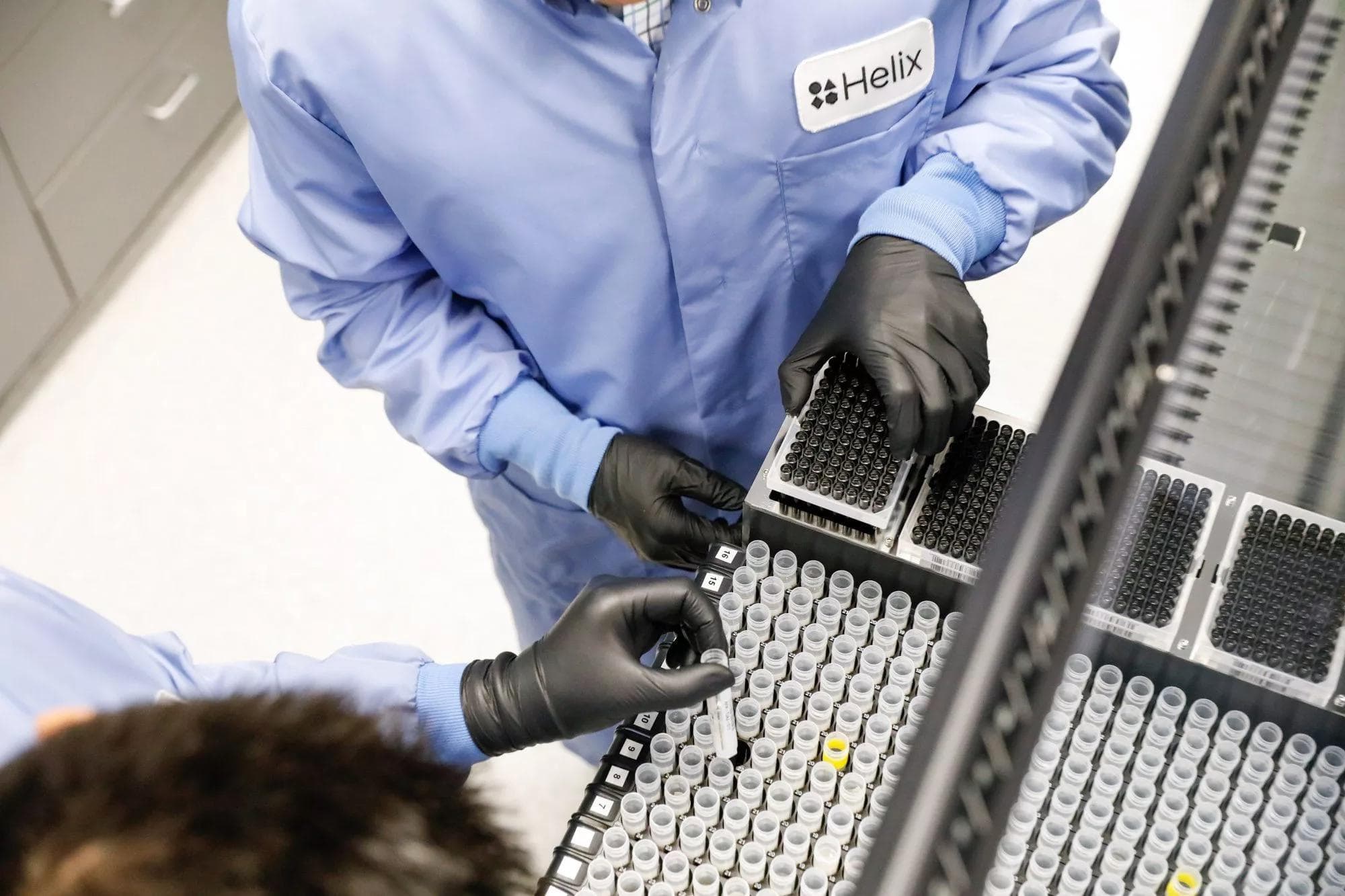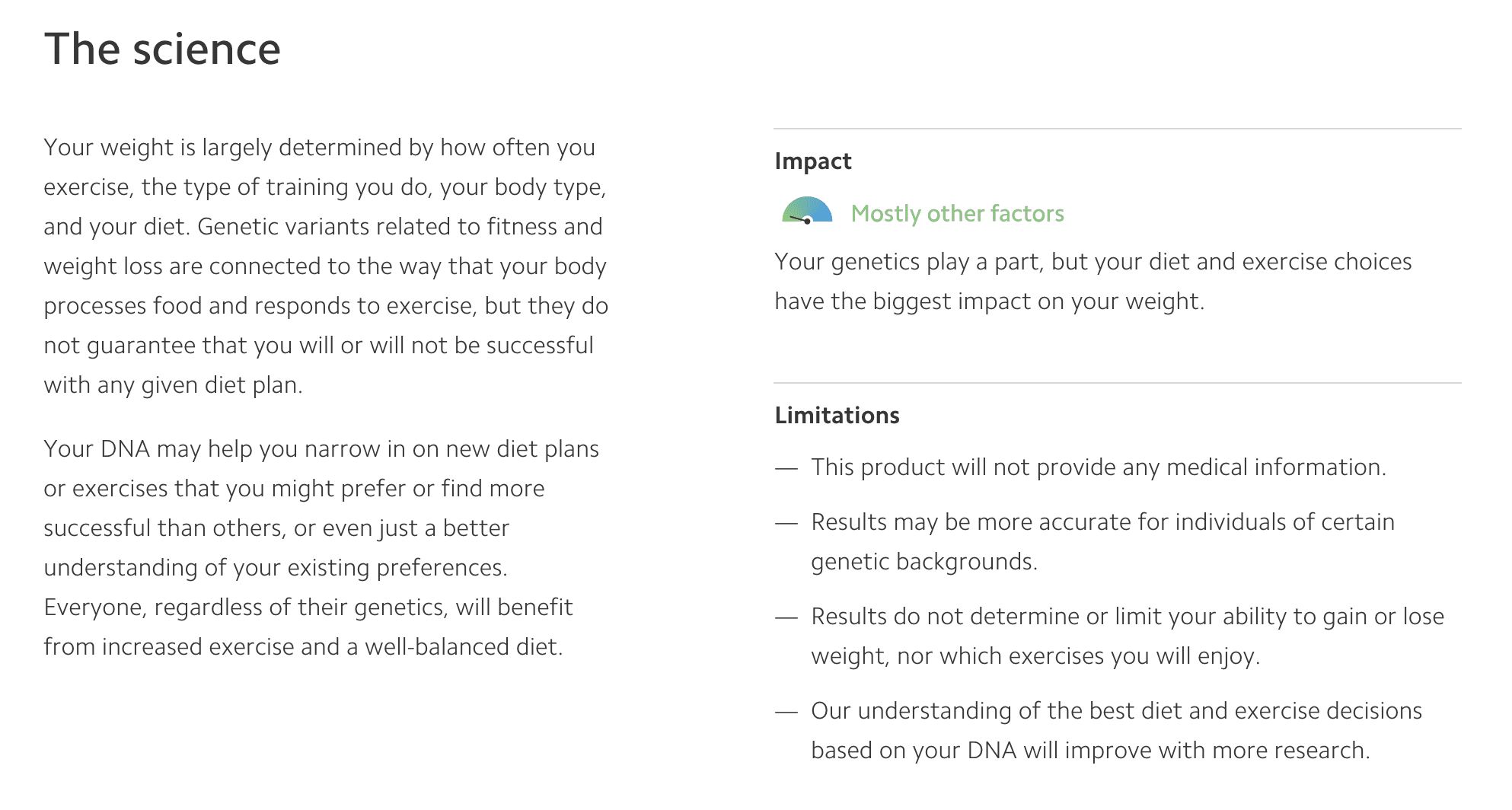How does Helix make sure partners are offering safe and accurate products?

As the first personal genomics platform, we’re excited to provide each and every person the ability to learn about themselves through our marketplace of novel DNA-powered products. Helix collaborates with our partners to help make sure their products are safe, accurate, and transparent.
One way we do this is by reviewing each of the products before they become available to our customers. The Helix science team performs three evaluations of new products. The first is a risk assessment of the product. The second, Scientific Evidence Evaluation, evaluates the underlying scientific content and claims of each partner product. The third is a technical review of integration between Helix and the partner product to ensure our customers receive accurate insights about themselves. We prefer to help partners improve their products as much as possible—but we have rejected, and will continue to reject, products that are unable to meet our standards.
Product Risk Assessment
We believe it should be easy for everyone to access their DNA information, but our first consideration is safety. Because of this, we assess the risk of each product by asking ourselves, “what is the potential for harm if an individual uses this product?”
Our first consideration is safety
For products with a higher risk of harm, we work more closely with our partners to mitigate possible risks. For example, with many health products we require these products be available only from partners with CLIA (Clinical Laboratory Improvements Act) certifications and that a customer’s health history must be reviewed by a licensed physician to ensure a test is right for them before testing. We also review the science behind the products more intensively, spending greater effort validating the underlying scientific content and recommendations. Lastly, we strongly encourage more explicit consent, clear language, great product design, educational resources, and access to genetic counseling to help individuals understand how the information they learn should be considered. If a health product cannot provide the appropriate support for our users, we do not allow that product on Helix.
Scientific Evidence Evaluation
Helix’s partner products utilize scientific literature and data science to produce novel DNA-powered products. We are inspired by the amount of scientific knowledge being generated every day; millions of articles have been added to PubMed in the past decade (Vardakas et al. 2015). Further, the pace of new peer-reviewed articles is accelerating (Bornmann and Mutz 2015). As a result, Helix has adopted a practical risk-based approach to reviewing the scientific content of its partner products that prioritizes safety (see above) but still promotes access to cutting-edge products.
Helix’s partners develop, deliver, and are responsible for the scientific content of their products. Helix asks partners to submit their supporting data for evaluation, and this typically takes the form of peer-reviewed studies, or internal research with sufficient details as would be needed for peer review. Helix does not allow interpretations or claims of specific outcomes that do not reflect the underlying evidence, and will ask partners to remove them if discovered.
Many of our partners make additional claims or recommendations based on the initial interpretation of the genetic data. These recommendations take three main forms. 1) Logical extrapolation based on the trait: “If you have stomachaches and an increased risk for lactose intolerance, try removing dairy from your diet.” 2) Expert advice: “Our physical trainers suggest doing more quad strengthening exercises based on your genetic profile.” 3) Direct outcomes-based recommendations: “Use of this product will result in weight loss.”
Helix reviews the recommendations within partner products using a framework that assesses product risk (see above) and the type of recommendation. Low-risk recommendations are frequently based on “logical extrapolation” or on “expert advice” that has not been validated with rigorous clinical trials. However, these recommendations typically draw on widely accepted recommendations commonly given by nutritionists, trainers, and other professionals.
In contrast, if a partner makes a direct recommendation that purports to lead to a specific outcome, we review the evidence to see if the recommendation is validated in the literature. For example, if you have a variant in MC1R that results in predisposition to red hair and fair skin, a “logical” recommendation would be “we suggest you wear sunscreen as individuals with fair skin are predisposed to sunburns.” A direct recommendation would be “individuals with your specific MC1R variant have been proven to benefit from this specific formulation of SPF50 sunscreen more than any other sun protection.” Helix does not permit claims of specific outcomes that do not reflect the underlying evidence and will remove them if discovered.
Helix and Partner Product Integration Testing
In order for users to engage with the DNA-powered products they buy on Helix, we share the required portions of their DNA with their consent. This data is accessed by partners through the Helix platform. Testing this process helps ensure our partners are able to accurately integrate data into their products and reduces the likelihood the product will have errors such as false negatives or false positives.
To test, Helix delivers DNA data derived from positive and negative control samples including different sets of variants, technical replicates, and related individuals. This process helps ensure partners are correctly interpreting Helix data and their methods meet a basic level of reproducibility and influence from genetic data. For our health partners, Helix expands this process to include blinded testing of Helix’s sequencing (Helix runs positive control samples submitted or selected by the partner that contain important variants that Helix is blinded to) and blinded testing of partners (Helix delivers data to partners with important variants that they should report on). Ultimately, this process provides confidence to Helix and its partners that the product is receiving the expected DNA data and returning the expected DNA insights.
Encouraging educated users through transparency
We aim to empower our users to make educated purchasing decisions
We aim to empower our users to make educated purchasing decisions. As part of this philosophy, we encourage our partners to cite supporting literature in their products and publish white papers and blog posts if their methods are proprietary. Further, on Helix’s product detail pages, our science team provides plain English summaries of the science behind the product, the impact of genetics in the product (relative to other factors, like the environment, or genetic factors not accounted for by the product), and specific limitations of the product. You can see sections like the one below for each partner product on helix.com.

Science Section from embodyDNA by Lose It!: Each product will have a long form description on left side, a gauge describing the impact of genetics on the product (from “mostly other factors” to “mostly genetics”), and limitations of the product.
Our goal is to provide users safe, accurate, and transparent products as they explore the new world of personal genomics. We seek to enable partners to build innovative products that engage and inform users while staying true to our current scientific understanding of DNA. We have established a process that we hope is consistent and fair, with a clear rationale for acceptance or rejection. However, this is a living process—we regularly see new products and experiences powered by DNA that teach us something new. We invite feedback so that we can refine our policies as we learn.